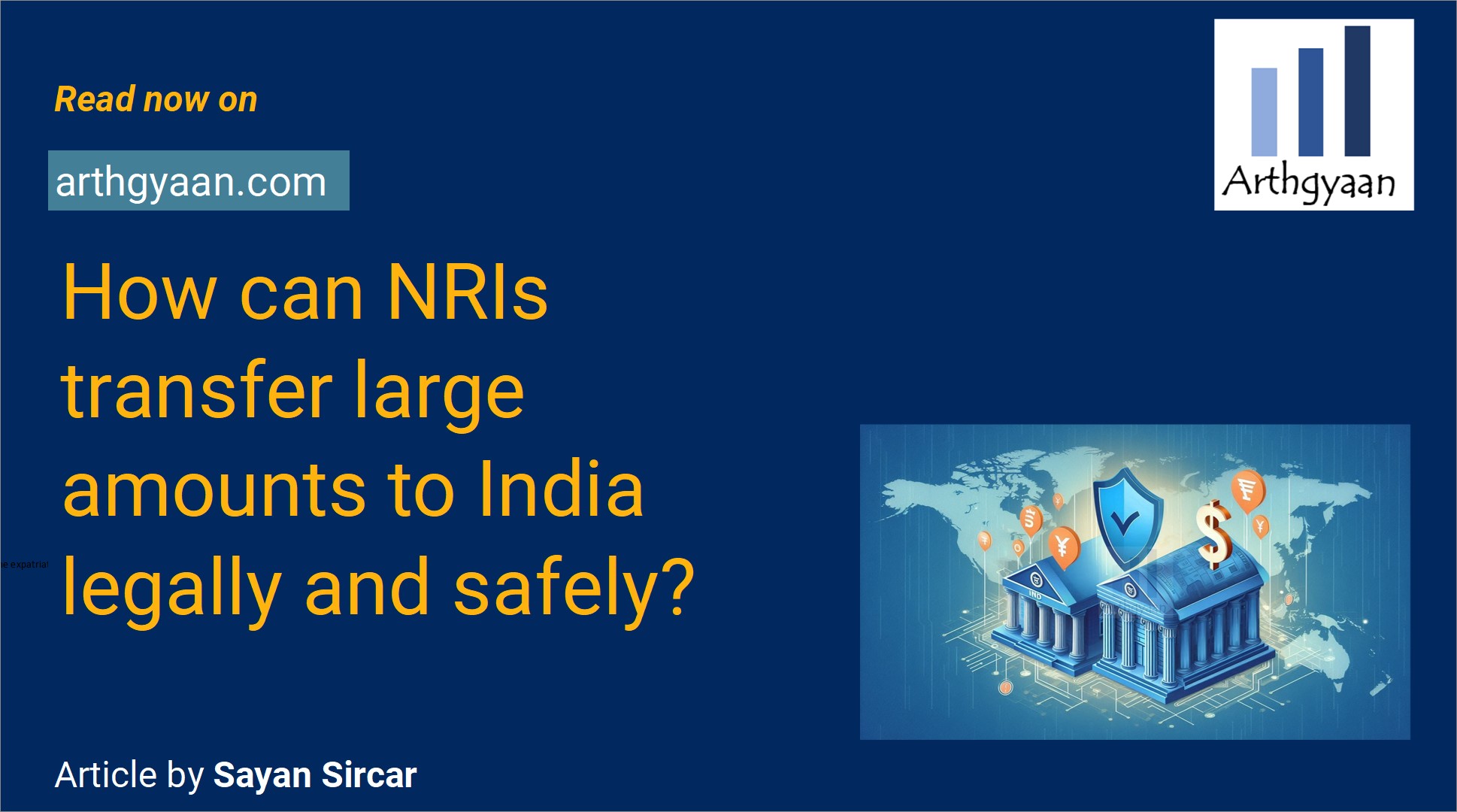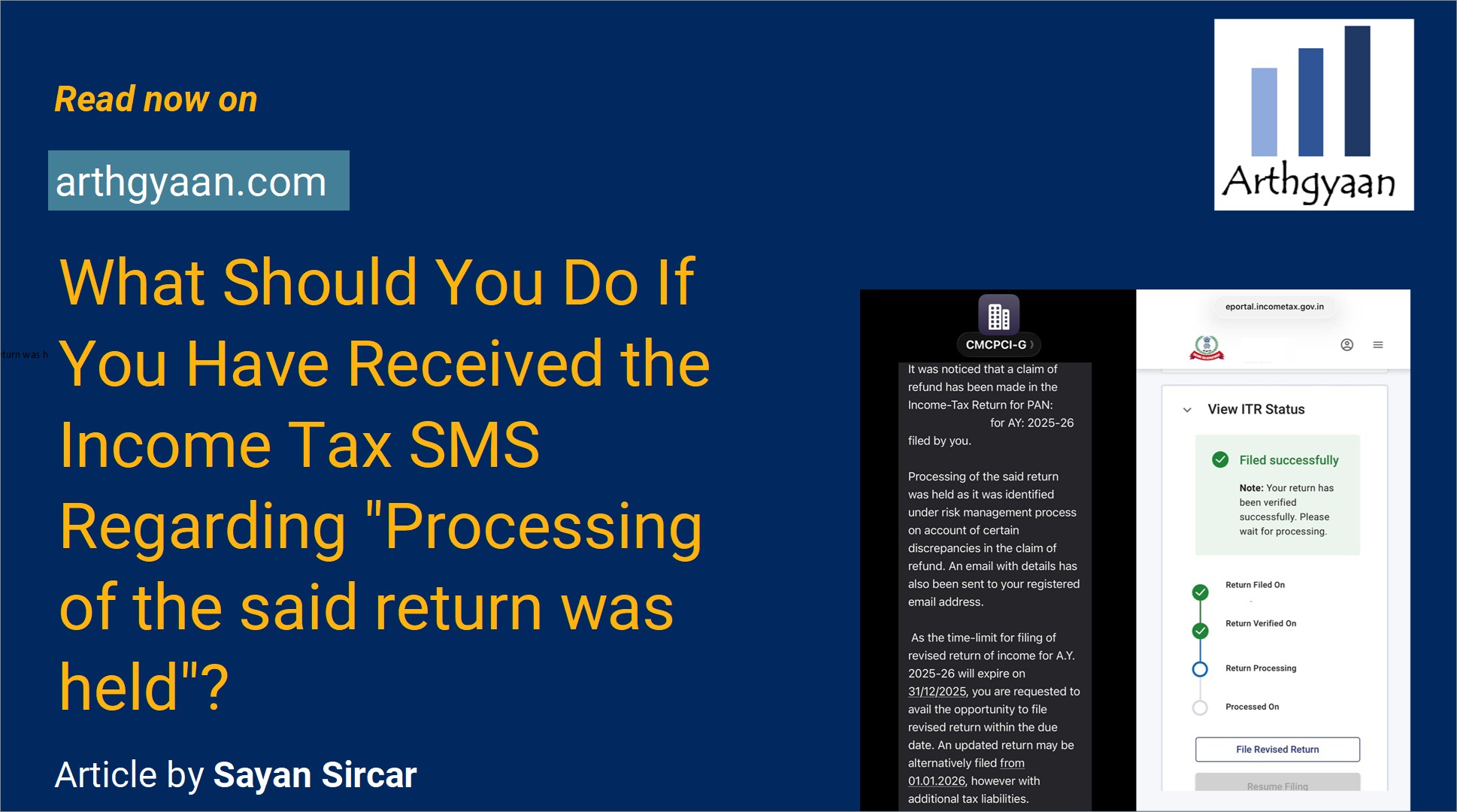How can NRIs transfer large amounts to India legally and safely?
This article discusses the best options for NRIs transferring large amounts to India along with the tax and compliance rules.
This article discusses the best options for NRIs transferring large amounts to India along with the tax and compliance rules.

In this article, we will consider large (>$100,000 or equivalent) one-time money transfers from abroad to India and focus on:
However, given how foreign exchange markets and associated regulations work, 100% compliance with legal and regulatory requirements may not always give the best exchange rates.
We will discuss the following mechanisms for transfer: services like Wise/Remitly, bank-to-bank wire transfer and FX Brokers and evaluate them on options like:
| Service Type | Transfer Limit | FX Spread | Compliance Readiness | Suitability for >$100K |
|---|---|---|---|---|
| Wise | ~$75K (region-dependent) | ~0.4% | Medium | ❌ (unless split) |
| Remitly | ~$30K/month | ~0.5-1.5% | Low-Medium | ❌ |
| Western Union | ~$10K typical | 2%+ | Low | ❌ |
| Bank Wire | Unlimited | 0.3-1.5% | High | ✅ |
| FX Brokers | High | 0.2-0.6% | High | ✅✅ |
Recommendation: Use a home-country bank with a SWIFT wire transfer to an NRE account in India. Negotiate the FX rate with the bank in India first.
Some banks like HSBC, which have branches in India as well as abroad, support immediate transfers if you already have accounts with them in both countries. If you plan to send this amount back anytime in the future, using a bank creates a proper paper trail.
Having Resident Indian accounts in India is a FEMA violation for an NRI.
Which is the best type of account for receiving large sums from abroad?
An NRE (Non-Resident External) account is ideal for receiving foreign funds in India. It allows NRIs to repatriate money without restrictions and offers tax-free interest income, making it a preferred choice for large remittances.
If the funds are to be kept in India and there is minimal chance of repatriation, then even an NRO account is used.
Here is a summary of the three types of accounts and their usages in India:
| Feature | NRE Account | NRO Account | RFC Account |
|---|---|---|---|
| Funding Source | Foreign income only | Foreign + Indian income | Transfer of foreign income/assets post-return |
| Currency Type | INR | INR | Foreign currency (USD, GBP, EUR, etc.) |
| Repatriation | Freely repatriable | Limited to USD 1M/year with forms 15CA/CB |
Freely repatriable |
| Tax on Interest (NRI) | Exempt | Taxable @30% + cess | Not applicable (not allowed as NRI) |
| Tax on Interest (RNOR) | Exempt | Taxable @30% | Exempt |
| Tax on Interest (Resident) | Taxable | Taxable | Taxable |
| Best Use Case | Holding foreign funds tax-free | Handling Indian income (rent, dividends etc.) |
Holding foreign funds post-return, repatriation flexibility |
| Use While RNOR? | Retain | Avoid for foreign transfers | Transfer foreign currency here |
| Ease of Remitting | Very High | Moderate (capped at $1mn w/ Forms 15CA/CB) |
Very High |
| Account Validity | NRI/RNOR only | NRI/RNOR/Resident | RNOR/Resident |
Transferring to an NRO account can be a good option for NRIs returning to India since the NRO account becomes a simple resident Indian account once the NRI status changes back to RNOR/ROR.
To comply with the Foreign Exchange Management Act (FEMA) rules, an NRI cannot have regular savings accounts in India. Therefore, you must convert existing accounts to NRO accounts and excess accounts must be closed. This step is important once your status changes from resident Indian to NRI and can be done either online, for selected banks, or during your next visit to India.
| Feature | NRO Account | NRE Account | FCNR(B) Account | RFC Account |
|---|---|---|---|---|
| Income Source | Indian income (including capital gains) |
Primarily foreign income, some taxable Indian income |
Foreign currency deposits | Funds held in foreign currency by returned NRIs |
| Repatriation | Allowed with Forms 15CA/15CB, up to $1 million/year |
Fully repatriable (for foreign income and taxable Indian income) |
Fully repatriable | Fully repatriable |
| Limits | Unlimited when deposited; $1 million/year on repatriation |
No limits on deposits/withdrawals | No limits on deposits/withdrawals | Generally no specific limits defined, but related to funds brought back upon return or received from specific sources |
| Capital Gains | Can receive proceeds from sale of assets | Cannot receive proceeds from sale of assets directly. Proceeds must go to NRO |
Cannot receive proceeds from sale of assets | Can receive proceeds from sale of foreign assets held before returning |
| Taxation | TDS applies to Indian income | Generally no tax on foreign income, tax applies to specific Indian income |
Interest earned is tax-free in India | Interest is taxable at slab in India |
| Currency | INR and Foreign currency | Foreign currency | Foreign currency | Foreign currency |
An NRE account can be opened only once you are an NRI as a fresh account. Old accounts, which existed when you were a resident Indian, must be converted into NRO accounts, not NRE accounts. You can check your NRI status here: Who is an NRI and who is not? Understanding FEMA and NRE/NRO bank accounts.
This account is used to send money to India. The features and uses are:
This account is used for any income and investments in India. The features and uses are:
Note: FCNR(A) accounts were discontinued in 1993 and used to have exchange rate guarantee from the RBI. Now only FCNR(B) accounts, without exchange rate guarantees, exist.
Resident Foreign Currency (RFC) are for NRIs who have returned to India and used to store foreign currency, say in USD, GBP and EUR
Read more about RFC accounts here: How Returning NRIs can Preserve Forex and Save Taxes via RFC accounts?
This table summarises NRE, NRO, FCNR and RFC account types for every type of tax status:
| Account Type | NRI | RNOR | Resident (ROR) |
|---|---|---|---|
| NRE | Open & Operate | Can Continue (if not yet reclassified) New not allowed |
Must be converted to Resident Account |
| NRO | Open & Operate | Continue as-is | Continue as-is |
| RFC | Cannot open | Can Open & Operate | Can Continue / No tax benefits |
| FCNR (B) | Open & Operate | Cannot open new Continue till maturity |
No new deposits Continue till maturity → must convert |
Transferring to a resident Indian account in your name is a FEMA violation.
Section 148 notices are about income that has escaped assessment
This notice, which is generally preceded by a Section 148A notification, can become a big problem if not dealt with immediately.
That being said, just because you made one or more large transfers to India, does not mean you will automatically get Section 148 proceedings initiated. It is always good to maintain the following documentation in case they are ever needed:
If you are not using a bank for your transfer, ensure that you are collecting the necessary documents from them.
In summary,
| Issue | Risk | Documentation That Protects You |
|---|---|---|
| Income Tax Department deems it taxable |
Medium | FIRC + Source of Funds + NRE receipt |
| FEMA violation (e.g., using NRE/NRO wrongly) |
Medium-High | Bank correspondence + RBI purpose code |
| Black Money Act scrutiny (if not declared abroad) |
High | TRC + Tax return from foreign jurisdiction |
These documents should be kept at least for 6 years in case of any tax notice and at least for 8-10 years for FEMA compliance.
You should also keep in mind that under FATCA/CRS, global assets are reportable. For example, if you transfer $100,000 from the US to India, you now have $100,000 in Indian assets that should be captured in your FBAR and trigger additional compliances like Forms 8938 and 8621. Other countries have similar regulations.
| Country | Regulation(s) | Reporting Threshold | Forms/Declarations Required | Trigger Events |
|---|---|---|---|---|
| United States | FATCA, FBAR (FinCEN), PFIC | $10,000 (FBAR), $50,000+ (FATCA/Form 8938) | FBAR (FinCEN 114), Form 8938, Form 8621 (PFIC) | Holding foreign accounts/assets > threshold |
| United Kingdom | CRS | £50,000+ (varies) | Self-assessment with foreign income declaration | Interest/dividends from Indian accounts/investments |
| Canada | CRS | CAD 100,000+ | T1135 Foreign Income Verification Statement | Holding specified foreign property |
| Australia | CRS, ATO Foreign Income Reporting | AUD 50,000+ (aggregate) | Foreign income section in tax return | Bank accounts, property, or investments abroad |
| Germany | CRS | No official threshold; all offshore assets | Declaration during annual tax filing | Any foreign income or asset ownership |
| Singapore | CRS | All foreign income taxable unless specifically exempt | Must declare global income in tax returns | Transfer or interest from Indian accounts |
| UAE | CRS | No personal income tax; banks report under CRS | No self-reporting, but banks share with foreign governments | Passive income from India (e.g., interest/dividends) |
| France | CRS | No official threshold | Foreign bank account declaration in annual filing | Holding Indian accounts or property |
| Switzerland | CRS | Thresholds set by banks | Automatic bank reporting to tax authorities | Transfers to/from India through Swiss accounts |
| New Zealand | CRS | NZD 50,000+ (aggregate) | Declare foreign income in IR3 or IR3NR | Bank interest, shares or real estate abroad |
Note: CRS countries automatically exchange information on financial accounts with each other. If you’re a tax resident in one CRS country and hold Indian bank/investment accounts, Indian institutions will report this to your home country’s tax authority.
Here is the complete guide showing the rules and regulations country-wise: NRI Money Transfers to India: What are the Taxation and Reporting Rules in the Foreign Country?
Generally, no. India does not tax the principal amount of funds you transfer from your foreign account, especially if it's from income that has already been taxed in your country of residence. However, income earned on these funds in India (like interest on an NRO account) is taxable. Also, gifts to non-relatives exceeding ₹50,000 in a year might be taxed.
Potentially, yes, in your country of residence. For example, in the US, transfers to family members are considered gifts and count towards your annual gift tax exclusion (USD 19,000 per person in 2025) and lifetime gift and estate tax exemption. In India, gifts received from close relatives are generally tax-free.
It's generally recommended to use a Non-Resident External (NRE) account for receiving funds from abroad. Interest earned on NRE accounts is tax-free in India, and the funds are fully repatriable. You cannot continue using your old resident Indian accounts; they must be converted to Non-Resident Ordinary (NRO) accounts.
Yes, you can transfer money to resident Indian accounts that are not in your name, such as those of parents, spouses, or siblings. These are usually considered gifts in India and are tax-free for close relatives.
Yes, it's crucial to maintain proper documentation, such as bank statements and transfer receipts, to create an audit trail. This is necessary to comply with India's Foreign Exchange Management Act (FEMA) and income tax rules.
Once you return to India with the intention to stay permanently (as per FEMA rules, typically staying for more than 182 days in a financial year), your NRE account must be converted to a regular resident Indian account.

Published: 23 December 2025
6 MIN READ

Published: 18 December 2025
8 MIN READ
1. Email me with any questions.
2. Use our goal-based investing template to prepare a financial plan for yourself.Don't forget to share this article on WhatsApp or Twitter or post this to Facebook.
Discuss this post with us via Facebook or get regular bite-sized updates on Twitter.
More posts...Disclaimer: Content on this site is for educational purpose only and is not financial advice. Nothing on this site should be construed as an offer or recommendation to buy/sell any financial product or service. Please consult a registered investment advisor before making any investments.
This post titled How can NRIs transfer large amounts to India legally and safely? first appeared on 20 Apr 2025 at https://arthgyaan.com
Copyright © 2021-2025 Arthgyaan.com. All rights reserved.